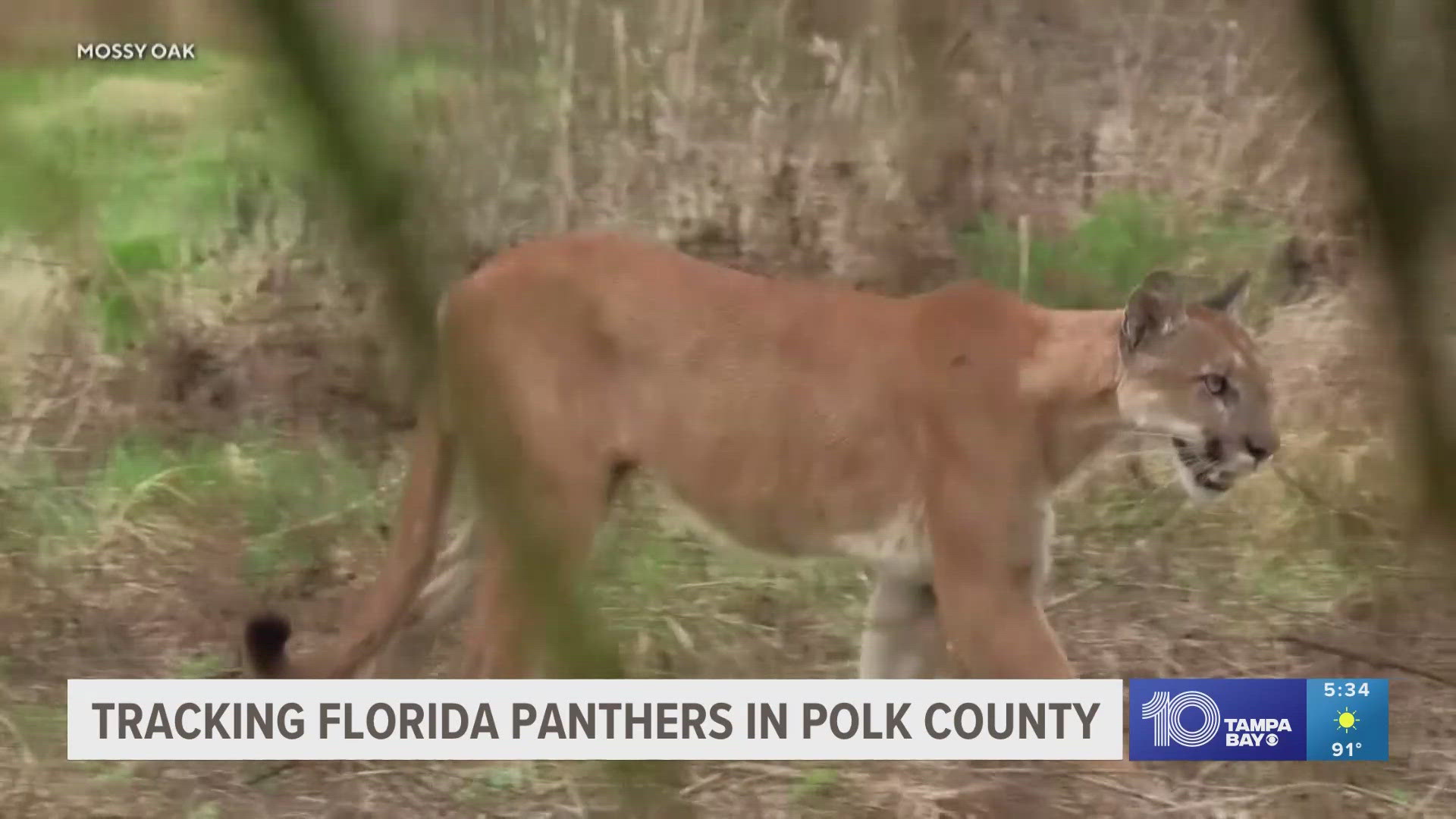LAKE WALES, Fla. — Across wooded areas in and around Lake Wales Ridge State Forest, researchers spent Monday checking motion-detecting trail cameras in search of the elusive Florida panther.
A search, now successful, for a few consecutive months.
“There's less than 200 that we know of out in the wild, so every sighting is really special to us as Florida natives,” Kelcey Innes, an animal care professional at ZooTampa, said.
In partnership with fStop Foundation, ZooTampa has been maintaining and checking several trail cameras placed in Polk County the first Monday of every month.
“It's important to see where their population is moving and also see what other animals around. We want to make sure that they have enough wildlife to sustain them if they are moving into these locations,” Tiffany Burns, senior animal director at ZooTampa, added.
The footage gives an eye inside areas frequented by wildlife, undisrupted by human activity.
“We get really excited when we see animals, whether it's an armadillo or a hog, and even more excited when we actually see the Florida panther,” Burns said.
On Monday, they got more footage of a panther, the same healthy male they’ve been seeing for months, continuing to make a home in Polk County.
Panthers, especially male ones, frequent large territories sometimes stretching upwards of 250 miles.
“Seeing him and making sure he maintains that body condition and he still continues to do well is really important,” Burns added.
Seeing them spread their paws more north is also an important sign. Typically the 200 wild panthers are largely seen in South Florida, where they face ongoing threats from a shrinking habitat and more drivers on the road.
This year 18 Florida Panthers have died; the majority were hit by cars.
“In order to sustain their populations, they will need to migrate more north. We do see a few males here and there, but we haven't seen the population move like we want it to or need it to, in order to continue to grow the population,” Burns explained.
Ongoing work like tracking panther movements and videotaping the majestic cats can help raise awareness that more needs to be done to keep Florida panthers around for future generations.
“It's something that all of Florida is going to have to get behind in order to truly help this species and all the other species that call Florida home,” Burns added.
“We want to help them get more of the land that they need and more space. Vehicle collisions is a huge issue, so as they try to start migrating back up north, they're unfortunately, getting hit by many vehicles,” Innes said.
“We want to help get the funding and the just word out to help them, to make more wildlife crossings and to just keep an eye out for them especially on the roads,” she added.
FWC has more information about Florida Panthers and conservation efforts, here.

